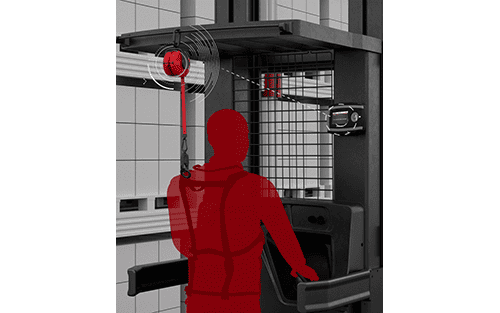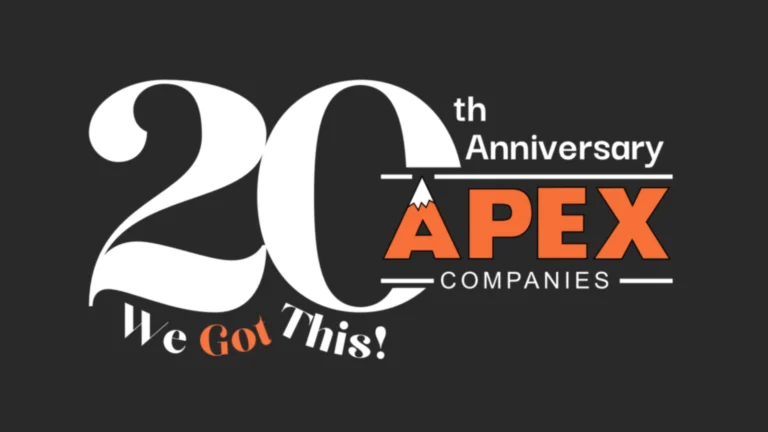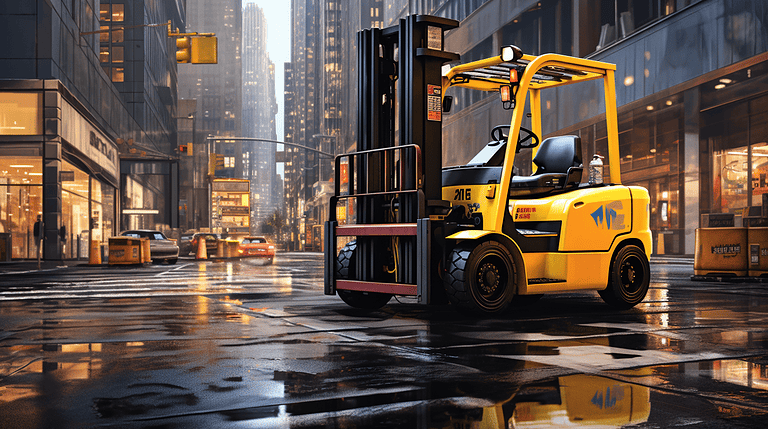
Driving a forklift on public roads is subject to specific guidelines and regulations. This article aims to provide clarity on road regulations, licensing requirements, and safety precautions essential for those considering using a forklift on public roads. We’ll also differentiate between warehouse forklifts and those designed for road use, evaluating their respective advantages and disadvantages.
Key Takeaways
- Roadworthiness: Before using a forklift on public roads, ensure it’s equipped with the mandated safety features. These include lights, reflectors, and a horn, essential for maintaining visibility and safety.
- Licensing: Apart from holding a valid driver’s license, forklift operators must also complete specific forklift operation training to handle the unique challenges posed by public road operation.
- Special Certification: Operating a forklift on public roads requires a distinct certification, ensuring that operators are trained to navigate safely amidst other vehicles.
- Safety Protocols: Abiding by traffic rules is imperative. It is essential to maintain a clear line of sight, secure the load, and operate the forklift in line with standard road etiquette.
- Regional Regulations: Forklift operation rules can vary by region or country. Whether in the US, UK, or Australia, familiarizing oneself with local regulations is critical.
Road Regulations for Forklift Operation
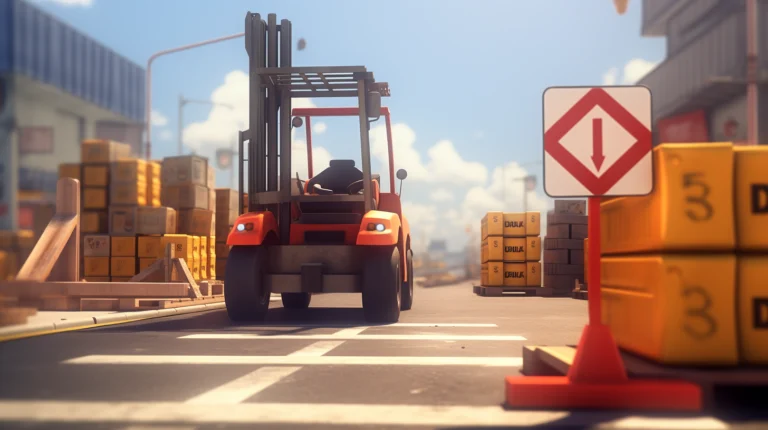
To operate a forklift on the road, you must comply with specific regulations and guidelines. These regulations are in place to ensure the safety of both the forklift operator and other road users.
One of the most important regulations is that the forklift must be equipped with all the necessary safety features, such as lights, reflectors, and a horn. This is to ensure that the forklift is visible to other vehicles and pedestrians on the road.
Another regulation is that the forklift operator must have a valid driver’s license. This is to ensure that the operator has the necessary skills and knowledge to operate a vehicle safely on the road. In addition, the operator must also undergo proper training specific to forklift operation.
Furthermore, forklifts on the road must adhere to the same traffic rules as other vehicles. This means obeying speed limits, stopping at red lights and stop signs, and yielding to pedestrians and other vehicles when necessary. It’s also important for forklift operators to be aware of their surroundings and to use caution when navigating through traffic.
Operating a forklift on the road requires compliance with specific regulations and guidelines, including equipping the forklift with safety features, having a valid driver’s license, and adhering to traffic rules. These regulations are in place to ensure the safety of everyone on the road.
Now let’s move on to discussing the licensing requirements for driving a forklift on the road.
Penalties/Repercussions for Non-compliance
Whizzing down the street on a forklift might seem like a breeze, but veer away from the set regulations, and you’re steering straight into a storm of troubles. Ignoring these crucial rules is no small matter, and the consequences can be hefty. Here’s what you might be up against:
Fines: This is the most immediate repercussion you could face. Depending on the severity of the infraction, these fines can range from being just a minor annoyance to a significant dent in your pocket.
Imprisonment: While it may sound severe, repeated or serious violations, especially those leading to accidents, can result in jail time. It’s a stark reminder that non-compliance isn’t taken lightly by the authorities.
Soaring Insurance Premiums: For businesses operating forklifts, non-compliance can translate to a rise in insurance premiums. A single infraction can lead insurers to view you as high risk, making it more expensive to get coverage.
Lawsuits: If a forklift-related accident occurs due to non-compliance, affected parties could bring lawsuits against the operator or the business. This not only brings potential financial burdens but can also tarnish the reputation of a business.
Revocation of License: Constantly flouting the rules? There’s a chance that your forklift operating license might be revoked, halting operations and potentially causing loss of income.
By now, it should be clear: non-compliance is a costly affair, both financially and reputation-wise. It’s always better to be in the know and on the right side of the law. Safety first – but also think of the broader implications for your wallet and image!
Licensing Requirements for Driving a Forklift on the Road
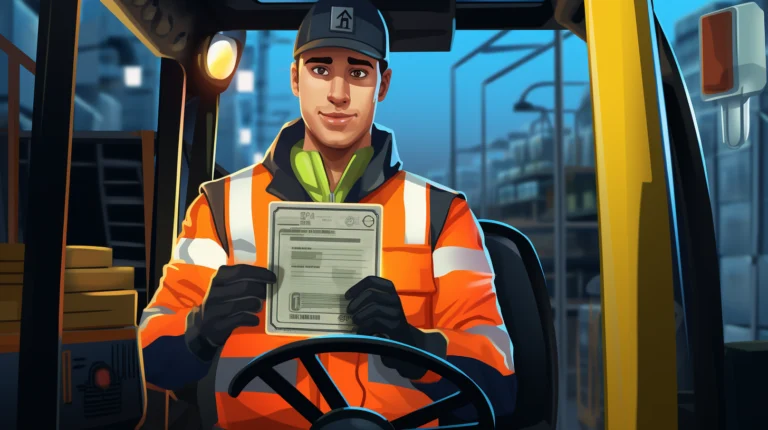
Now let’s delve into the licensing requirements you need to meet in order to drive a forklift on the road.
Driving a forklift on public roads requires a special license, as it’s considered a specialized skill. The specific licensing requirements may vary depending on your location, but in general, you’ll need to obtain a forklift operator’s license or certification.
This license typically involves completing a training program that covers both the theoretical and practical aspects of operating a forklift. To obtain the license, you may need to meet certain criteria such as being of a minimum age, having a valid driver’s license, and passing a written and practical exam.
The training program may be provided by an accredited training organization or through your employer. It’s important to note that the licensing requirements can differ between driving a forklift on private property and driving it on public roads.
Once you have obtained the necessary license, you’ll be legally allowed to drive a forklift on public roads, provided you adhere to the specific road regulations for forklift operation. These regulations are designed to ensure the safety of both the forklift operator and other road users.
Now that we’ve discussed the licensing requirements, let’s move on to the next section, which will cover the safety precautions you should take when driving a forklift on public roads.
Assessing Risks: The Implications of Forklifts on Public Roads
Operating forklifts on public roads comes with its set of challenges and risks. Understanding these risks is essential not only for operators but also for pedestrians and other drivers. Here are some common issues associated with forklifts on public roads:
Collisions with Other Vehicles: The size and maneuverability of a forklift can make it more prone to accidents when mixed with regular traffic.
Pedestrian Incidents: Forklifts might not always be easily visible to pedestrians, leading to potential mishaps.
Rollovers: Forklifts, due to their design, can be at risk of rollovers if not operated with care, especially on uneven surfaces.
Impaired Visibility: The design of some forklifts can impede the operator’s visibility, leading to accidents.
Understanding and mitigating these risks is paramount for ensuring safety on public roads.
Real-life Incidents Highlighting the Importance of Safety
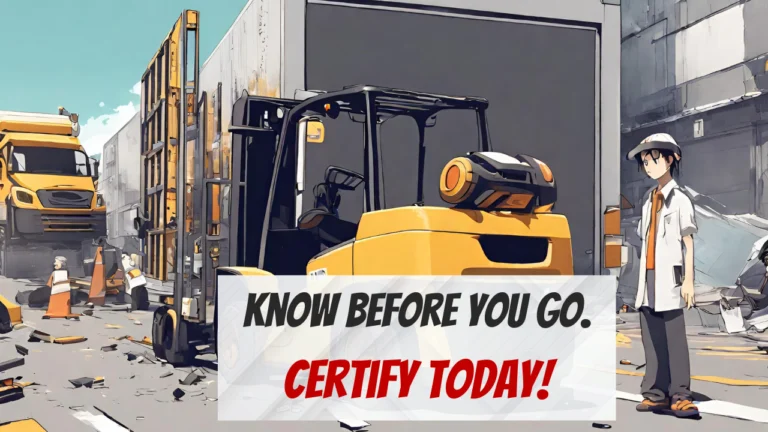
If you thought forklifts only danced their heavy-duty ballet in warehouses and closed-off construction zones, think again! As much as they’re champions in these areas, when taken to public roads without due care, they can turn from helpful giants to real hazards. Let’s dive into some alarming incidents from around the globe that spotlight why it’s downright essential to respect safety guidelines:
A Night to Forget in Houston
Rewind to February 2023. Houston’s south side, a usually bustling area, witnessed a distressing event one wouldn’t wish on their worst enemy. An SUV, perhaps trusting its speed a tad too much, collided head-on with a forklift. The aftermath? Two souls tragically lost to a moment’s negligence
The Annual Grim Tally
OSHA isn’t just throwing numbers for fun. Their stats paint a grim picture of the risks associated with forklifts. In 2021, these metal beasts were behind 70 heart-wrenching fatalities and a staggering 7,290 injuries that weren’t fatal but did force victims to take unwanted breaks from work.
Typical Troubles on the Road
You’d think with all the training and safety manuals floating around, every forklift mishap would be a rare occurrence. But no. The usual suspects include:
- Pedestrians playing an unfortunate game of ‘tag’ with a forklift.
- Forklifts taking a tumble and rolling over (they aren’t gymnasts after all!).
- Falling from the forklift – it’s not a theme park ride.
- Getting a nasty surprise from a falling load.
- Crashes caused by Mr. Forklift wearing ‘block-my-vision’ sunglasses.
Those Unexpected Moments
We’ve all had our ‘Oops!’ moments. For some forklift operators, a fleeting distraction or a sudden blind spot can lead to an ‘Oops!’ that’s hard to forget. Maybe it’s a pedestrian magically appearing, or perhaps the workspace turned into an obstacle course without warning.
Let’s be clear: No one’s saying ‘Ditch the forklift!’ These incidents simply underline the profound importance of treating forklift operation with the respect, attention, and training it deserves. After all, when on the road, it’s not just about getting from point A to B; it’s about doing so without turning it into a tragic headline.
Safety Precautions When Driving a Forklift on Public Roads
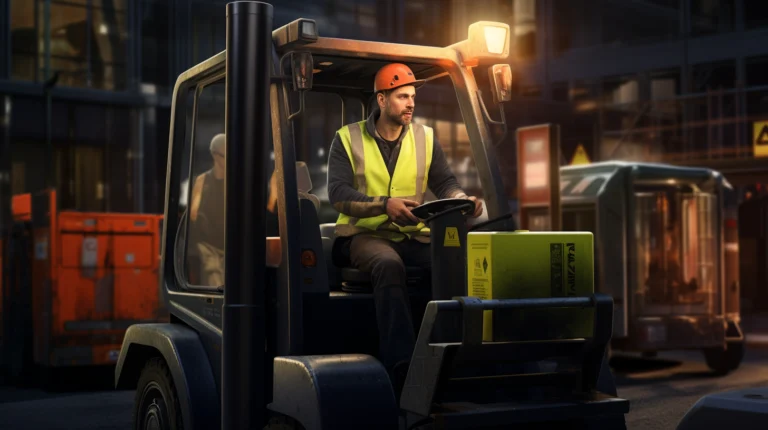
When driving a forklift on public roads, it’s crucial to follow specific safety precautions to ensure the well-being of both the operator and other road users. Here are three important safety measures to consider:
Observe traffic rules:
Treat the forklift as any other vehicle on the road. Adhere to speed limits, traffic signals, and road signs. Always signal your intentions, use mirrors to check blind spots, and yield to other vehicles when necessary.
Maintain visibility:
Ensure that the forklift is equipped with all the necessary lights and reflectors required by law. Use headlights, taillights, and turn signals to make your presence known to other drivers. Avoid operating in adverse weather conditions that may impair visibility.
Secure the load properly:
Before driving on public roads, make sure that the load on the forklift is stable and secure. Use appropriate attachments, such as straps or chains, to prevent the load from shifting or falling off during transit. Avoid overloading the forklift, as it can affect stability and maneuverability.
By following these safety precautions, you can minimize the risk of accidents and ensure the safe operation of a forklift on public roads.
Differences Between Forklifts Used in Warehouses and on the Road
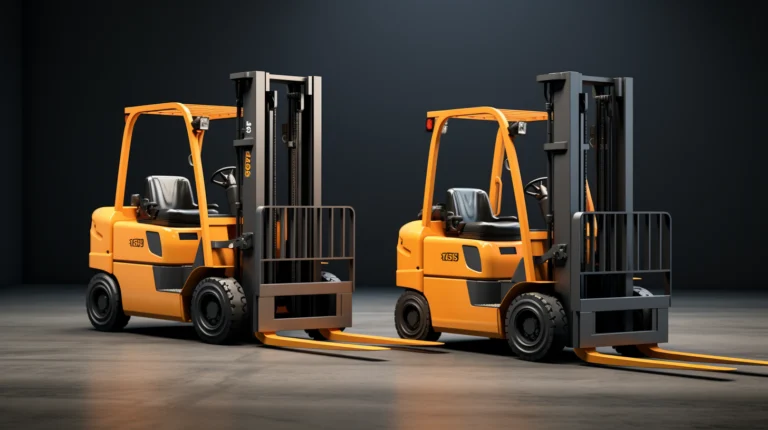
While forklifts used in warehouses are designed for specific tasks, those used on the road have different features and capabilities. When it comes to forklifts used on the road, they are typically larger and more powerful compared to their warehouse counterparts. They are built to handle a variety of terrains and weather conditions, ensuring smooth operation in outdoor environments.
| Road Forklifts | |
Size | Smaller | Larger |
Power | Less powerful | More powerful |
Terrain | Indoor use | Outdoor use |
Weather Conditions | N/A | Designed for various conditions |
Speed | Slower | Faster |
The table above highlights some of the key differences between forklifts used in warehouses and those used on the road. Warehouse forklifts are designed to navigate confined spaces and operate indoors, whereas road forklifts are built for outdoor use, capable of handling rough terrain and adverse weather conditions. Additionally, road forklifts tend to be more powerful and faster, allowing for efficient transport of goods over longer distances. Understanding these differences is crucial for selecting the right type of forklift for specific tasks and environments.
Diverse Regulations Based on Location
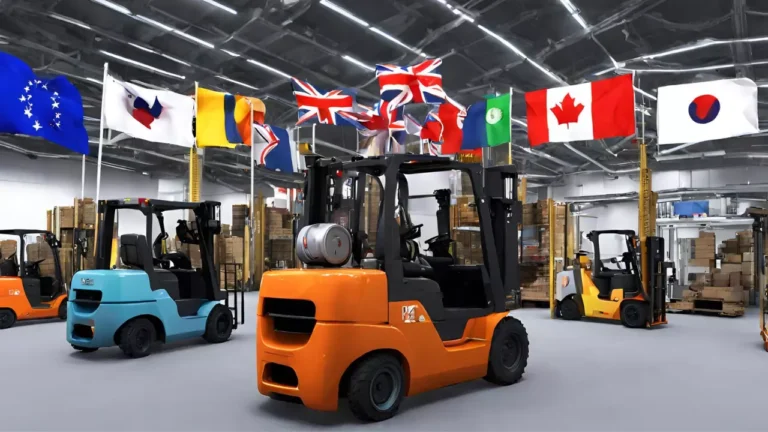
Steering a forklift is just like your normal driving, the rulebook changes based on where you are. Countries, just like old friends, have their quirks. So, before you rev up that forklift engine, let’s navigate through the global maze of forklift regulations:
-
United States: Here in the land of stars and stripes, it’s OSHA’s 29 CFR 1910.178 that holds the cards. It’s chock full of provisions related to the safe use of powered industrial equipment. Specifically, we’re talking about rules like 1910.178(l) (operator training, so no rookies on the road), 1910.178(l)(1)(i) and 1910.178(l)(1)(ii) (making sure employers vouch for their workers’ competence with the necessary training), and 1910.178(l)(4) (because even the pros need a refresher now and then).
-
United Kingdom: Over in the realm of the Queen, it’s the Approved Code of Practice (ACOP) and Guidance L117 leading the charge. This code sheds light on training for those nifty stacking rider-operated lift trucks. Dive deeper, and you’ll also stumble upon other guiding stars like the Provision and Use of Work Equipment Regulations (PUWER) 98 and the Lifting Operations and Lifting Equipment Regulations 1998 (LOLER). Quite a mouthful, but crucial if you’re hopping onto a forklift across the pond.
-
Canada: Up in the Great White North, they’re clear about who gets to steer a forklift. The Occupational Safety and Health Act (OSHA) mandates in Clause 25(2)(a) that employers must serve up the right info, instructions, and oversight to shield their crew. Dive into Regulation 851, and Clause 51(2)(a) hammers it home: only the “competent”—those savvy, trained, and versed in lift truck lore—can drive. And assessing a forklift’s finesse? Leave that to the pros, says Clause 51(1)(b). So, Canada’s message? Know your stuff, or park it!
-
Australia: G’day, mate! Down Under, it’s not all kangaroos and koalas. Operating a forklift here? It’s high-risk business. Before dreaming of an HRW license, figure out your truck category. Are you team LO or team LF? Make sure you know before hitting the roads.
-
New Zealand: Kiwi land is straightforward on this one. Want to operate a forklift? Grab a Forklift Operator Certificate. That’s your golden ticket to ride!
-
European Union: Ah, the grand old EU. With a mix of cultures and languages, regulations here require a tad more attention. While there isn’t a one-size-fits-all EU directive, individual countries under the EU banner mandate their forklift operators to be both trained and certified. So, if you’re in the EU, make sure to check local regulations.
While the spirit of safety remains universal, the rulebook varies. Whether you’re in the US, UK, Canada, Australia, New Zealand, or any EU nation, know the local dance moves. Forklift regulations? They’re the tango of the industrial world. Know your steps, and you’ll dance through any job with grace!
Benefits and Drawbacks of Driving a Forklift on the Road
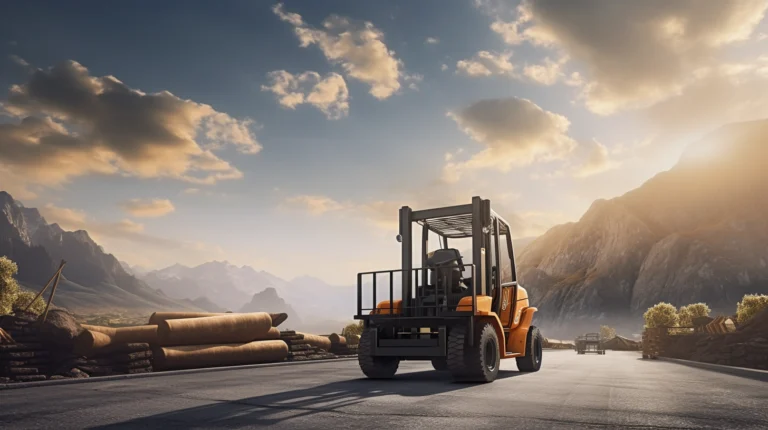
Driving a forklift on the road offers both benefits and drawbacks that you should consider. While it may seem convenient to use a forklift for transportation purposes, there are important factors to take into account.
Increased Efficiency:
Forklifts on the road can help improve efficiency in transporting heavy loads over long distances. They have a higher lifting capacity compared to regular vehicles, allowing for the transportation of larger and heavier items.
Flexibility:
Forklifts that are capable of being driven on the road offer greater flexibility in terms of transportation options. They can easily move between different locations without the need for additional equipment or assistance.
Traffic Regulations:
One major drawback of driving a forklift on the road is the need to comply with traffic regulations. Forklift operators must have a valid driver’s license, adhere to speed limits, and follow road signs and signals. Failure to do so can result in fines or legal consequences.
It is important to weigh the benefits and drawbacks before deciding to drive a forklift on the road. Consider factors such as the nature of your business, the distance of transportation, and the availability of suitable routes.
Conclusion
Ready to roll a forklift onto the public roads? Hold that thought and gear up for a journey through the maze of regulations, licensing, and safety measures that stand between your forklift and the open road. It’s not just about steering the wheels right; it’s about meeting the road regulations, acing the licensing game, and ensuring the safety bells and whistles are all in place.
While road-ready forklifts promise a blend of efficiency and flexibility, they also demand a tight grip on traffic rules. Stray off the rulebook, and you’re heading into a storm of legal troubles and hefty fines.
So, before you rev up that forklift engine, make sure you’re well-versed with the local laws, have the right licenses in your pocket, and are all set to treat your forklift just like any other vehicle on the road. Remember, it’s about cruising through the regulations, not just the roads!
Frequently Asked Questions
Can I drive a forklift on public roads?
Yes, you can drive a forklift on public roads provided it complies with the necessary road regulations and is equipped with essential safety features like lights, reflectors, and a horn.
Do I need a special license to drive a forklift on public roads?
Absolutely! Besides a valid driver's license, you'll need a special forklift operator's license or certification, which entails undergoing specific training and passing a practical exam.
What safety features are required for a forklift on public roads?
Essential safety features include lights, reflectors, and a horn to ensure visibility and to alert other road users of your presence, promoting safety on the road.
Are there different rules for driving forklifts in different countries?
Yes, forklift driving regulations vary significantly across regions. It's crucial to familiarize yourself with the local laws and regulations regarding forklift operation on public roads.
What are the penalties for non-compliance with forklift road regulations?
Penalties can range from fines and soaring insurance premiums to imprisonment, lawsuits, and revocation of your forklift operating license in severe cases of non-compliance.
How do road forklifts differ from warehouse forklifts?
Road forklifts are generally larger, more powerful, and are designed to handle outdoor terrains. They must adhere to traffic rules, unlike warehouse forklifts that operate in controlled environments.
What precautions should I take when driving a forklift on public roads?
Adhere to traffic rules, maintain visibility, secure the load properly, treat the forklift as any other vehicle on the road, and follow the specific road regulations for forklift operation.
Can forklifts be used for long-distance transportation on roads?
Forklifts can be used for long-distance transportation on roads, but it's vital to consider factors like business needs, transportation distance, and the suitability of the route for forklift travel.
Sources
https://www.oshaeducationcenter.com/forklift-certification/ https://www.wiu.edu/facilities_management/ehs/manuals/forkliftoperator.php https://www.mdpi.com/2076-3417/11/7/2901 https://abc13.com/houston-police-vehicular-crimes-division-double-fatal-crash-bellfort-avenue/12793705/ https://www.tdi.texas.gov/pubs/videoresource/t5forksafetyrules.pdf https://www.bigrentz.com/blog/forklift-accident https://www.osha.gov/laws-regs/regulations/standardnumber/1910/1910.178 http://www.aes-training.com/pdfs/approvedcodeofpractice2013.pdf https://www.labour.gov.on.ca/english/hs/pubs/lifttrucks/gl_lift_4.php


